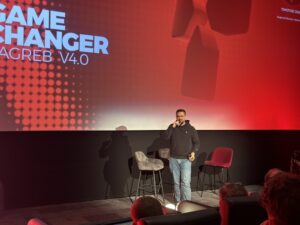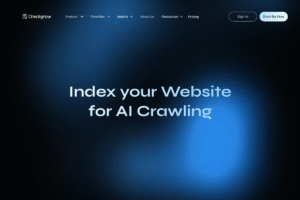Does this sound familiar?
You needed a new website, so you found a solid agency that gave you a great deal, their portfolio looks A+.
Then you hired someone else for SEO, they specialise in rankings. You brought in a freelancer to run your ads, he has great ratings on Fiverr, a proper hidden gem.
Your content? Outsourced, cheap, maybe even AI-generated, worst case daughter of your best friend hacked it, she is just an amazing young girl!
Each piece seemed to work fine on its own, but after months of effort you’re still wondering: “Why aren’t we getting more customers?”
Traffic is up, you’re ranking better, your ads are getting clicks. But conversions? Sales? Growth? Still underwhelming, and it’s not your fault, neither is your friends daughter, her content is probably killer, it just does not connect to your buyers intent and point at their journey.
The Hidden Cost of Piecemeal Marketing
Many businesses fall into the same trap: They optimise each piece of the marketing puzzle in isolation, but here’s the truth: growth doesn’t come from individual assets. It comes from how those assets work together in a seamless customer journey.
When your website, SEO, ads, and content are all built by different vendors with no shared plan, you create:
– Inconsistent messaging
– Gaps in the user experience
– Broken tracking across platforms
– Missed follow-up opportunities
It’s like building a bridge with parts from five different factories, and no blueprint to hold them together.
Pretty Marketing Is Not Performance Marketing
Let’s break it down: A beautiful website that doesn’t convert is just a digital brochure. Great SEO with no clear funnel? Traffic that goes nowhere. Ads that generate clicks but no leads? Wasted budget.
It’s easy to celebrate vanity metrics “look how many people visited!”, while the actual business impact stays flat. That’s the difference between marketing assets and a customer acquisition system.
What You Actually Need: A Journey That Converts
People don’t think in channels. They act in moments, and if those moments aren’t aligned, they move on. To convert them, you need to orchestrate that journey.
This means:
• Designing touchpoints that align: in message, tone, and timing
• Creating landing pages built to convert, not just inform
• Tracking user behaviour across every step
• Following up intelligently based on what users actually do
• Constantly learning and optimising using data
You need a Customer Journey Framework
At Checkgrow, we’ve helped companies grow by doing one thing exceptionally well: Designing and implementing customer journeys that convert.
Instead of juggling five vendors, we provide:
• A unified acquisition strategy
• Conversion-optimised web and landing pages
• Paid ad campaigns with built-in follow-up
• Retargeting flows and email automation
• Analytics that track the full funnel, from ad to sale
• AI-assisted optimisation for constant improvement
Your budget isn’t the problem. The disconnect between your efforts is, because saving €5,000 on your website means nothing if you’re losing €20,000 in missed conversions over the next six months.
What It Takes to Build a Marketing System That Converts
You’ve seen the difference between scattered assets and an aligned system, but what does it actually take to build one?
Here are the foundational components we focus on at Checkgrow, and what they mean in practice:
1. A Clear Acquisition Strategy
Before a single ad runs or a page goes live, we need to know who we’re building for, and how they make decisions.
Defining your ICP is the first step: what drives growth is understanding how they think, when they act, and what keeps them from clicking “buy”.
We map the decision-making journey from first curiosity to final conversion. That includes keyword behaviour, seasonal patterns, budget sensitivity, content preferences, and even how urgency shows up across devices.
When we understand the full spectrum of user intent and emotional triggers, we craft messages that spark interest, build trust, and lead to a measurable momentum.
2. Landing Pages Built to Convert
A strong landing page is engineered to drive a single, clear action. nothing more, nothing less. At Checkgrow, we obsess over how people read, where they pause, what distracts them, and what builds trust.
Every landing page we build is shaped by micro-conversions: headline clarity, CTA positioning, testimonial weight, loading speed, and mobile thumb zones. These elements exist to support decisions, reduce friction, and increase conversion.
If your page looks good but doesn’t guide the user toward a clear next step, it’s not helping your system.
Design needs to serve direction.
3. Consistent Messaging Across Touchpoints
Users don’t experience your funnel in sequence, they jump from an ad to your Instagram, skim a landing page, open a cart reminder two days later, and judge your brand based on how all of it fits together.
That’s why we build messaging maps before building assets. Every channel, every ad group, every email campaign, all tied to the same strategic spine.
When each touchpoint echoes the same truth, it becomes easier to say “yes.” That reassures the user that no matter where they land, they’re still on the right path.
4. Smart Follow-Up Mechanisms
Most users need more than one exposure to convert, but generic follow-ups miss the mark, either by arriving too late, repeating the wrong message, or ignoring what the user actually showed interest in.
We build segmented follow-up flows that adapt to behaviour: what page they visited, which product they clicked, how long they stayed, whether they bounced or explored.
That means:
- Retargeting campaigns triggered by product page visits
- Email sequences based on cart value and frequency
- Special nudges for returning visitors showing renewed interest
Follow-up should feel like a continuation, not an interruption. When done right, it doesn’t push, but aligns.
5. Full-Funnel Tracking
No system performs without visibility. We track not just where people enter your funnel, but where they hesitate, drop off, and where they’re most likely to return.
Our dashboards go beyond surface metrics. We show:
- Conversion paths by audience segment
- Drop-off rates by funnel stage
- Click-through rates by message variant
- Attribution data tied to real actions, not assumptions
This lets you answer the real questions: What content drives action? What audience is most valuable? What messaging actually converts?
With clear data, you can make decisions that sharpen every move you make, and not just react after the fact.
6. Continuous Optimisation With AI
A healthy funnel adapts, breathes, and responds to what your audience is doing right now.
We use AI to help us learn faster: testing headlines, analysing heatmaps, spotting patterns in bounce rates and scroll depth. We track how copy changes impact CTRs, how form length affects completions, how subject lines shift open rates.
We also don’t just test for the sake of it. Every experiment is grounded in strategy: What are we trying to learn? What behaviour are we aiming to influence? What’s our success metric?
This creates a culture of continuous learning where nothing is left to guesswork, and every tweak builds toward something smarter.
The Bottom Line
Tools are only as useful as the journey they support. We build with that in mind.
Everything we’ve outlined is rooted in lived work and real-world growth. From first touch to final sale, we connect the dots so nothing gets lost in the cracks.
If you’re not sure where to start, or you feel like your current efforts aren’t landing the way they should, we’d love to help.
Let’s fix your funnel. Let’s grow together!






